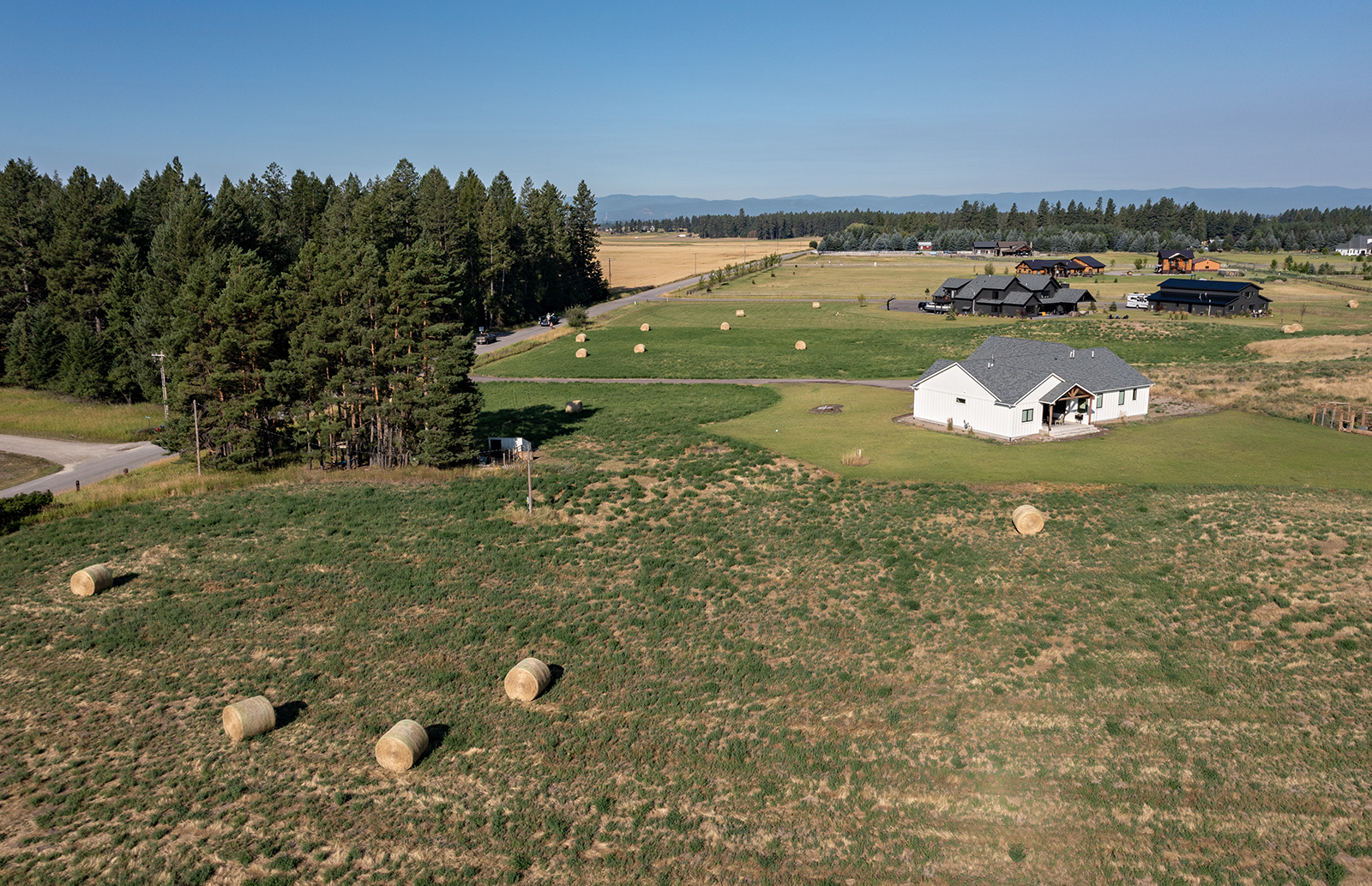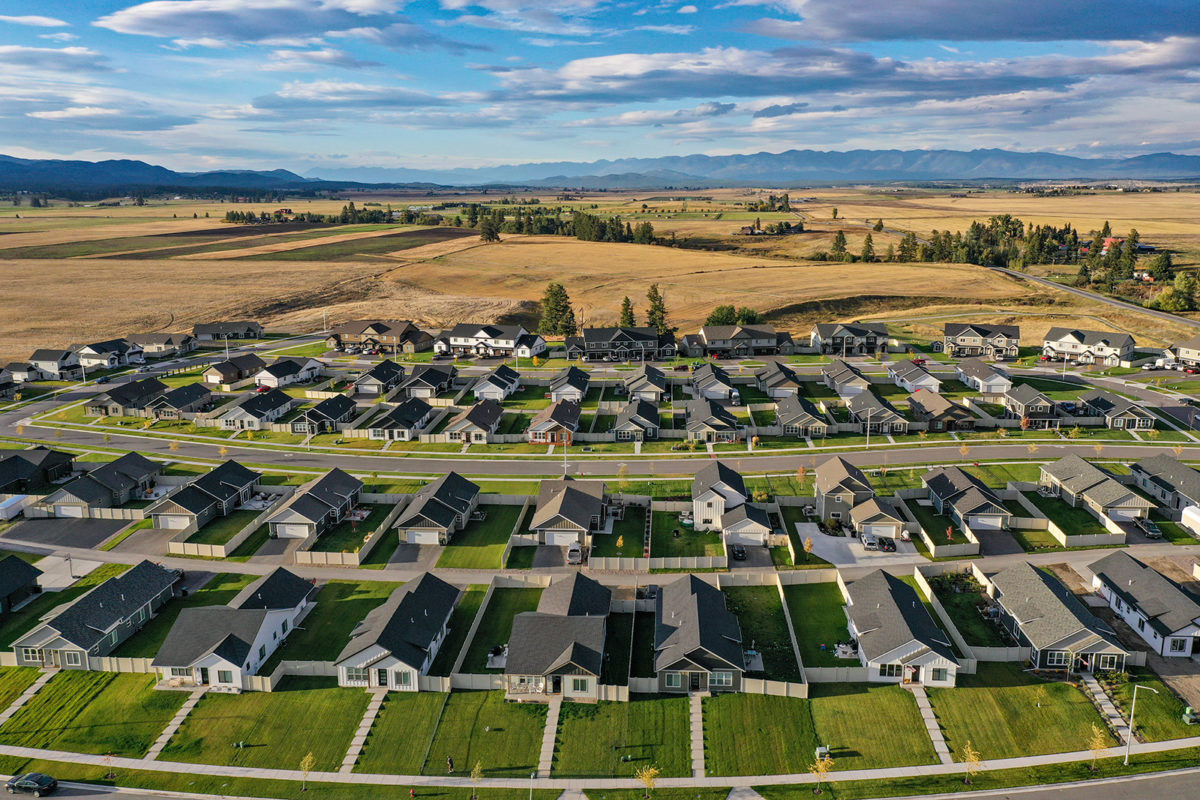High Land Prices and Congested Highways Pose Logistical Challenges for Flathead Farmers
Most commodity producers in the Flathead Valley rely on dozens of individual landowners to lease their property for production as the agriculture industry continues to dwindle and open space is lost
By Maggie Dresser
As a third-generation producer based out of Creston, Miles Passmore has been farming cereal crops like wheat and barley along with other crops like peas, alfalfa and hay with his father for the past 18 years across the Flathead Valley.
Passmore’s great grandparents moved to the Flathead in 1936 and while he farms on his family’s land, he also travels across the valley to work on 4,500 acres of leased parcels from such a high volume of landlords that he can’t keep track of how many he has.
“It’s a lot,” Passmore said. “I can’t give an honest answer.”
While leasing parcels from landowners is nothing new in the Flathead, experts say that as land prices and development demand rise, producers continue to lose agriculture parcels every year and the patchwork of plots becomes more scattered.
Passmore says most of his landlords want him to continue farming and his plots stay somewhat consistent, but he still loses acreage depending on the year. For example, one of his leased parcels that he still farms was sold last year, but the new owner has plans to subdivide it in the coming years.
Heritage Custom Farming Owner Tryg Koch says he loses up to 200 acres every year to ownership changes, but he usually gains acreage from different landowners simultaneously.
“It’s constantly changing,” Koch said. “It makes it really hard to orchestrate.”
Koch farms 2,500 acres across the Flathead and has 70 individual landlords, some who build homes on the land he is still leasing, which he is then forced to farm around. The unpredictability surrounding the future of the open agriculture space takes an emotional toll on producers as their acreage volume remains unsteady.
“It’s a mentally challenging thing to do,” Koch said. “The work isn’t that hard – you can do the work. It’s that mental aspect.”

As demand for commercial and residential development outpaces supply, Montana continues to lose open space. According to a Headwaters Economics report, 56% of single-family homes statewide were built outside of incorporated areas from 2000 to 2021 while 41% of single-family homes were built in neighborhoods where lot sizes exceeded 10 acres.
According to the report, most counties are seeing new housing on large lots including in Flathead County where homes built on large lots account for 35% of new homes.
In Flathead County, 49,120 acres of open space were converted to housing between 2000 and 2021, while Gallatin County saw 67,520 acres converted during the same time frame. By comparison, 6,560 acres were converted in nearby Glacier County and 1,280 acres were converted to housing in Liberty County along the Hi-Line.
“Certainly across the landscape, we are losing acreage every year due to fast development,” Flathead Land Trust Executive Director Paul Travis said. “Landowners are either forced to sell or they see high value in selling for development versus farming.”
Travis works with landowners who are dedicated to preserving their farmland, but he says they face dilemmas as land value remains high.
“That’s been the predicament in the Flathead Valley – that’s why the land trust is working to conserve farmland before it’s gone,” Travis said. “We know the financial pressures on landowners.”
According to United States Department of Agriculture (USDA) data, there were 1,019 farms in Flathead County in 2022 totaling 160,817 acres, with an average farm size of 158 acres. By comparison, there were 2.4 million acres of farmland in Choteau County.
“There used to be big fields – there was a lot of agriculture in the valley and now there isn’t because these parcels are getting subdivided,” Koch said.

The subdivision of parcels has created farming efficiency challenges, Koch said, which includes the constant relocating of farming equipment to various properties across the valley.
Most producers in the Flathead are forced to drive heavy machinery down congested highways that lack shoulders where drivers are usually speeding.
“The biggest problem we have in Flathead and Gallatin counties is the traffic and how inconsiderate people are of farm machinery,” Koch said. “Our roads were not designed to handle wide loads and it’s a real problem.”
Passmore said he’s seen several accidents involving farming equipment and motorists, including a motorcyclist who drove into a swather and a separate incident when a car hit a tractor that was turning left.
“We are slow-moving vehicles, and we are in the way,” Passmore said. “We don’t want to slow people down, but we have a job to do. It’s becoming more and more of a problem.”
But Koch says leasing land is the only option for producers in the valley, despite the dangerous driving conditions, logistical issues, and working with dozens of landlords.
“You’re forced to lease,” Koch said. “You can’t blame these landowners when they can make a lot of money subdividing or selling it. That’s why it will be the detriment to the agriculture industry in Flathead County. It will kill it.”